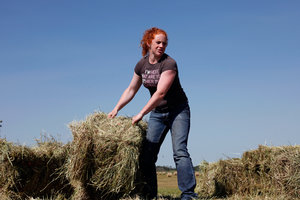To provide further insight into the U.S. agriculture industry, the U.S. Department of Agriculture’s Economic Research Service released a report in December 2015 that examined farm revenue, occupation and ownership. The “America’s Diverse Family Farms” report looks at U.S. farms ranging in size, as well as both family and corporate operations.
“Our research reveals that family farms remain an essential feature of agriculture in the United States,” stated Bob Hoppe of the Economic Research Service in a news release. “Family farms of different types together account for 99 percent of farms and 90 percent of production. Most farms in United States are small, and these small family farms operate nearly half of U.S.”
Other statistics in the report reveal that more than one-third of all farms have multiple operators, and large farms are more likely to have several generations of operators. Operators of farms tend to be older than other self-employed workers; 33 percent of principal farm operators were at least 65 years old in 2014, compared with only 12 percent of self-employed workers in nonagricultural businesses.
Additionally, while small family farms make up a majority of the farm count, mid-size and large-scale family farms dominate production. Small farms produce much of the country’s poultry and hay. Mid-size and large farms tend to specialize in cotton, cash grains, soybeans and hogs.
“America’s Diverse Family Farms’ reveals that, for now and for the foreseeable future, families are central to our agricultural economy,” Hoppe continued.
